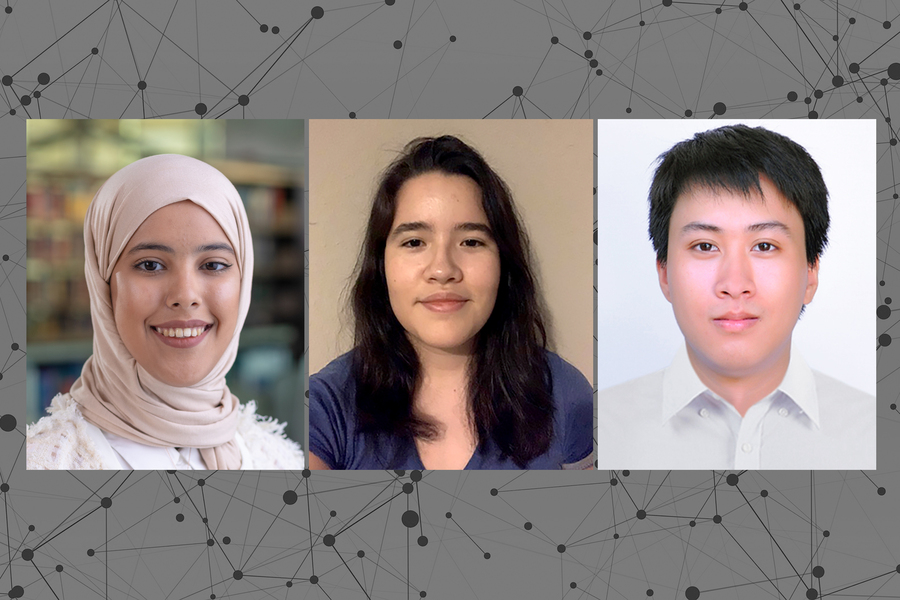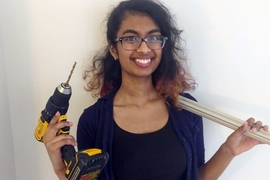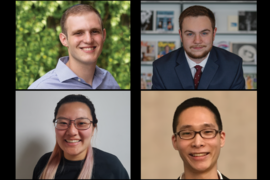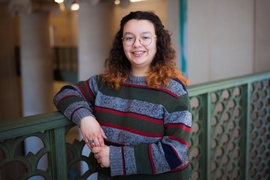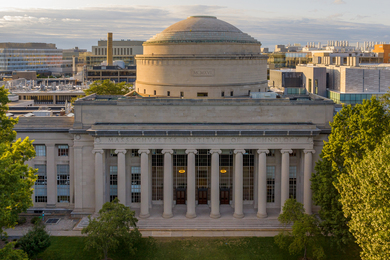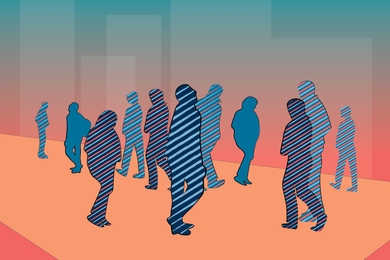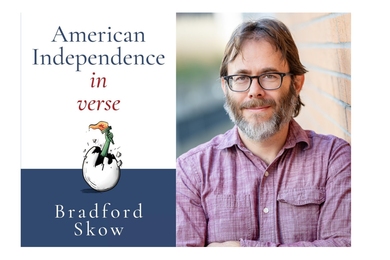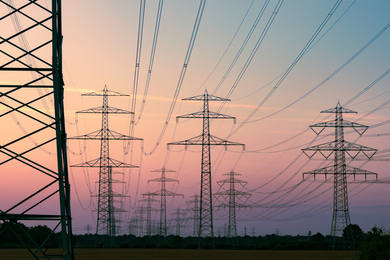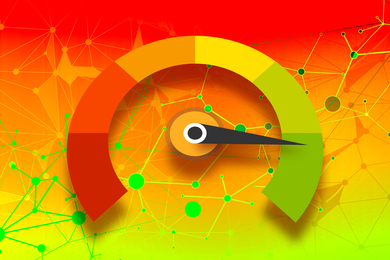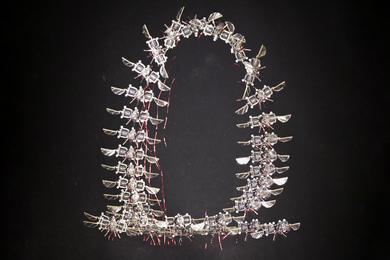In mid-March, when the Covid-19 pandemic darkened MIT classrooms and labs, lights switched on for undergraduate research taking place remotely. Zooming in from time zones often distant from Cambridge, Massachusetts, many students were able to continue undergraduate research opportunities (UROPs) made possible by nuclear science and engineering faculty.
Advancing projects begun during January independent activities period or the start of spring semester, students overcame significant obstacles to make their research experiences meaningful while working from home — whether that home was in a manicured U.S. suburban subdivision, a palm-lined street in the Middle East, or, in the case of Quynh T. Nguyen, surrounded by local rice fields in Vietnam.
“It was tough returning to Dong Hoi City, because I thought that meant I was done with my UROP for the semester,” says the rising junior majoring in physics. Working with Assistant Professor Mingda Li, Nguyen had been investigating the thermal transport properties of materials, growing crystals in the lab. One goal of such work is optimizing heat transfer in materials to improve efficiency in energy production. “I was so grateful when Professor Li found ways for me to stay on the project from home,” he says.
While finishing his spring classes online — a major undertaking given the 11-hour time difference and difficulties accessing MIT servers — Nguyen pivoted with enthusiasm from lab work to developing machine learning applications for the same project.
“I’ve been excited about machine learning since taking a class, and so actually this UROP has allowed me to leverage my knowledge in an extremely new and interesting way for me,” says Nguyen.
Aljazzy Alahmadi, a rising sophomore, managed to get back to Saudi Arabia the day before such international flights were halted. “I was in a UROP meeting when MIT emailed the news, and I didn’t think about anything except getting home as fast as possible,” she recalls. But soon after she settled into life in Dammam, a city of more than a million on the Persian Gulf, she was relieved to learn that she could continue her project with graduate student Saleem Aldajani, within the lab of Associate Professor Michael P. Short.
“My work involves finding trends in the degradation of a stainless steel alloy often used in light water nuclear reactors when it’s under reactor-like thermal conditions,” she says. This kind of information might contribute to extended lifetimes for light water reactors. But after training with steel cutting and specialized spectroscopy techniques in the lab, her remote location necessitated a turn to data analysis instead.
“I was kind of happy about this switch,” Alahmadi says. “When I began the project, I didn’t really grasp what it was all about — I was learning how to cut steel samples — so when I started focusing on datasets I could intellectually explore in a way I couldn’t before.”
After she returned to her home in Katy, Texas, a small city in Houston’s shadow, Andrea Garcia, a rising sophomore, says she felt “kind of devastated.” Drawn to disciplines that would enable her to address environmental problems and climate change, Garcia had just decided to concentrate in materials science and engineering. “I had a lot of things planned for the rest of the semester,” she says, including a UROP in the Short lab. After hearing him lecture about the promise of fusion energy in the fall, Garcia had determined to learn more about nuclear energy more broadly.
She leapt into Short’s project, spending weeks learning how to use lasers safely. “Then we got kicked out due to Covid,” says Garcia. “I thought there’d be no way for undergraduate researchers to keep doing the research, but Professor Short made it happen, offering to run experiments and send us the data.”
Flying (mostly) solo
Although routinely in touch with faculty and lab supervisors via email and Zoom meetings, the students were on their own for the most part during spring semester and beyond. While they found the physical isolation from a team challenging at times, the undergraduates also relished their independence.
“I was analyzing data on irradiated samples of titanium aluminum metals, focused on thermal diffusivity, and was left to my own devices,” says Garcia. “Every week, we had to present our findings, and I came to feel a sense of ownership, that I was having an impact and that my work was achieving something.”
Investigating electrical and thermal conductivity of crystals that feature some unique quantum properties proved fascinating to Nguyen, not least because it catalyzed him to “learn many new things related to machine learning on Coursera,” as well as to investigate domains of physics previously unfamiliar to him. He especially enjoyed prowling through vast online databases: “I find it amazing that scientists have built these repositories and made them available for everyone to access.”
Alahmadi felt energized by the quest to find something of value in her datasets. “With this project, I felt I couldn’t leave until I reached a point of a deliverable,” she says. “I wanted to get a result, publish a paper, go to a conference — get the full experience of this.”
Sticking with it
Although their fall plans might be uncertain, these students remain anchored by their continuing research. Garcia, who found that she enjoyed using Python to create graphs mapping the properties of her material samples, says the experience reminded her “that computer science is a useful skill.” As a result, she hopes to bear down on her materials science major while taking more computer science courses.
“My wildest dream, which keeps me going, is to incorporate power systems in Saudi that don’t use carbon,” Alahmadi says. She hopes to stick with her UROP, wherever she is living. “It’s taught me to open my eyes to all things so I can learn new skills, from acquiring new capabilities to make projects go faster, to collaborating well with other lab members.”
Nguyen, who is targeting a career in applied physics, feels his experience with the UROP “is invaluable for my future,” he says. He has co-authored a scientific publication, and feels deep ties to his Cambridge-based research group. He has come to view this difficult period not as an obstacle, but an opportunity. “It’s an unprecedented experience, working and communicating remotely,” he says. “We are all experiencing a painful pandemic, but as Professor Li notes we are living in a historic time that will one day be memorialized in movies and books, so it’s not all bad.”
